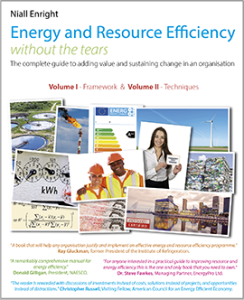 In my experience many energy and resource efficiency audits are rushed. I plead guilty to multiple counts of the the most common cause: designing the budget to meet the client’s expectations rather than the engineering or technical requirements of the job. The question is: Is this approach correct?
In my experience many energy and resource efficiency audits are rushed. I plead guilty to multiple counts of the the most common cause: designing the budget to meet the client’s expectations rather than the engineering or technical requirements of the job. The question is: Is this approach correct?
The table below shows the amount of time that should be dedicated to project development according to the Australian Energy Efficiency Opportunities (EEO) Act. (By the way one AUD is about GBP £0.60 and USD $0.90).
| Number of hours effort required to bring forward opportunity recommendations based on the AUD $ cost of the opportunity. |
Saving <$10k p.a. |
Saving $10k – $100k p.a. |
Saving $100k – $1M p.a. |
Saving > $1M + p.a. |
| Opportunity Estimation. Analyse how the opportunity impacts site energy use. Develop clear assumptions on the impact of future changes. Use the above to estimate energy savings. Confirming accuracy of savings. |
1 – 3 |
3 – 16 |
16 – 50 |
50 – 200 |
| Business Case. Forecast energy saving. Calculate simple payback. Develop assumptions and calculations. Make implementation recommendations. |
1 |
2 – 8 |
8 – 20 |
> 20 |
|
Total |
2-4 |
5-24 |
24-70 |
70-220 |
Adapted from table 4.3 in “Energy Savings Measurement Guide”
I then compared these times with a number of recent audits that I have been involved in:
|
# Opportunities |
EEO Minimum Estimated Time |
Actual Time |
|
| Chemicals (South Africa) |
41 |
135 |
112 |
| Automotive (Czech Rep) |
20 |
135 |
75 |
| Tea (UK) |
34 |
115 |
90 |
| Cosmetics (US) |
63 |
978 |
105 |
| Airport (UK) |
27 |
95 |
21 |
|
1458 |
403 |
The values I have used for the EEO column are: where the savings are less than $10k AUD then we should devote 3 hours to it and then under $100k 6 hours and over $100k 24 hours. These are close to the absolute minimum times the EEO recommended not the average!.
In reality the amount of time dedicated fell short of this in every single project I was involved with.
That suggests either:
- The EEO recommended times are unnecessary
- The teams I was working with are outstandingly good, quick and productive (which they definitely were!)
- We should have devoted more time to the assessments
Looking at the data the biggest variance was probably in the amount of time spent evaluating the larger-value projects. This is what causes the pronounced difference in the Cosmetics and Airport audits.
First of all, anyone with any experience in the field knows that when estimating the amount of time needed for an audit there are a number of factors to be considered, not just the number of projects and their savings potential. The complexity of the organisation and processes, the availability of data and equipment specification, the variability of the activities in the building or factory are all key issues to consider as well as language and other local factors.
It is impossible to give a single metric which will enable effort to be calculated. Nevertheless, it seems that the audit approach may have been under-resourced according to the EEO. I agree. I have no doubt that if more time was available more opportunities could have been discovered and a more accurate quantification of cost/benefit made.
The question then is whether the lesser effort has harmed the outcome. I would say definitely not. In the examples above effort we devoted was sufficient to meet the goal of providing the client with the necessary investment case for action.
By not “over-egging” the initial audit cost the clients were more willing to proceed with the audit in the first place. This balance between designing the ideal discovery process and that which the decision-maker is willing to invest in can be challenging. This is particularly the case where the audit is being provided by a third-party consultancy who is bidding competitively for the work.
They do say “perfect is the enemy of good” and I think that I will always lean towards encouraging organisations to take some sort of first step however short that is of the ideal – for it is better to embark on the journey than not at all.
There are other articles on energy and resource efficiency audits: The purpose of an audit and Opportunity interdependency.
For more ideas and challenges check out all the posts on this site.
Learn what an effective resource efficiency framework looks like.
Read reviews of books on the theme of change.
Or learn how SustainSuccess services can drive improvement in your organisation.



Hi Niall,
There has is a more fundamental question to be answered first: what is the client hoping to achieve and what does he want the outcome to look like – before we consider how much time (and cost) to allocate. Sadly “energy audit” is almost as much of a mis-used label as “engineer” (noun). Expectations of cost are clouded by cut price “audits” funded by 3rd parties (government programmes, utility programmes, etc…) and expectations of output are all over the place from a list of ideas through to a report of thesis-like proportions. And is a report what the client really needs? I am fearful, for the EU, at least, that the EU EE Directive’s requirements for periodic audits for many organisations will result, once again, in a race to the bottom, lowest cost, most bland level of investigation and reporting possible. The truth is that a comprehensive assessment of energy saving potential, with properly assessed real savings potentials and solid capital cost estimates, takes time, effort and expertise. There are too many organisations and individuals touting “energy audits” and few of them will produce a robust business case that will stand up to scrutiny.
Perhaps we ditch the term “energy audit” in favour of something more descriptive that says, on the tin, what it does for the client!
Chris